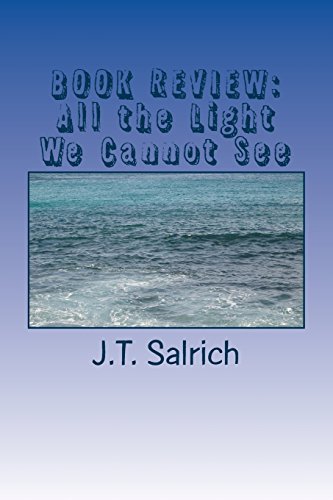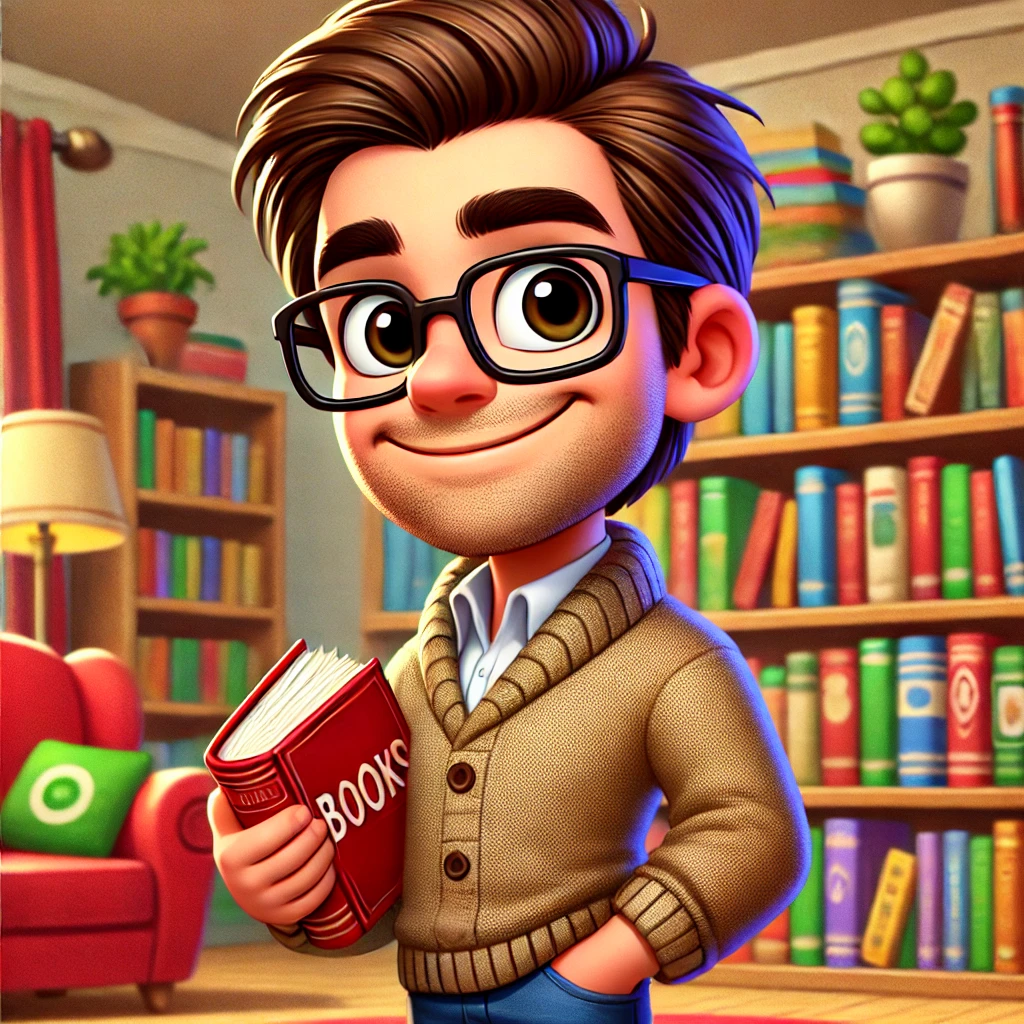If you’ve ever wondered how light can break through the darkest of times, you’ll want to stick around for this review of ‘All the Light We Cannot See’. Anthony Doerr weaves a tale during WWII, where characters like Marie-Laure and Werner navigate a world teetering between hope and despair. Get ready for a mix of emotion, a touch of humor, and even a little confusion as we uncover the pros and cons of this gripping novel.
In a Nutshell
Anthony Doerr’s All the Light We Cannot See is a historical fiction masterpiece set during World War II. It’s a gripping tale that follows two unforgettable characters, Marie-Laure, a blind French girl, and Werner, a German boy with a knack for radios. The novel weaves their stories together, exploring deep themes of light versus darkness, survival, and hope amidst chaos. Doerr crafts a vivid atmosphere, letting readers experience the war’s impact on individuals and their personal journeys. It’s a truly engaging read, though the alternating timelines might need a bit of focus. Highly recommend for fans of beautifully written, character-driven stories.
Unforgettable Journeys: Characters that Shine in All the Light We Cannot See
Oh boy, the characters in “All the Light We Cannot See” make me feel like I’m meeting people at a party, only they’re in a book. We have Marie-Laure, a blind French girl, and Werner, a young German soldier, both trapped in the whirlwind of World War II. Their journeys are more packed than my suitcase on a last-minute vacation. It’s like watching a mystery unravel, but with more heart than Sherlock Holmes could ever offer.
Marie-Laure is as brave as I was when I first tried Brussels sprouts—only she actually succeeds. Her world is filled with codes and treasures, and her resilience is nothing short of inspiring. Meanwhile, Werner’s story is like watching someone balance on a tightrope, trying to do what’s right when everything seems wrong.
These characters are as real as the socks I’m currently wearing (and trust me, they are very real). They pull you in and make you root for them, even when they stumble. The author, Anthony Doerr, crafts them so well, I wouldn’t be surprised if they knocked on my door for a cup of sugar.
However, let’s not throw a party just yet. At times, I felt like some parts stretched on like a rubber band ready to snap. But that’s a minor dent in an otherwise sleek ride.
Next up, let’s take a stroll through the World War II setting and atmosphere, where we will walk as cautiously as a cat on a hot tin roof.
Exploring the World War II Setting in ‘All the Light We Cannot See’
Oh boy, let me tell you, the World War II setting in All the Light We Cannot See is as immersive as it gets! I once read it during a thunderstorm, and it felt like I was right there, dodging bombs in the streets of Saint-Malo. The author, Anthony Doerr, didn’t miss a beat, capturing the tension and uncertainty of a world at war. I remember feeling my heart pound as intense scenes unfolded. It was almost like watching a live-action movie made with words. Talk about having a front-row seat in history!
The book paints a vivid picture of occupied France, with its war-torn beaches, crumbling buildings, and the ever-present fear that looms over the characters. I mean, the detailed descriptions of the environment and the atmosphere make you feel like you could get a sunburn from the blitzkrieg! It’s like Doerr built this time machine just for us and said, “Here, take a look at the past, but don’t forget your hard hat because things might fall apart!”
However, while the setting is beautifully depicted, I did find myself occasionally grappling with the jumping timelines. It’s a bit like trying to keep track of the score in a chaotic ping-pong match. Still, when you settle into the rhythm, it all adds to the charm of the storytelling. The world-building in All the Light We Cannot See is nothing short of masterful, and it serves as a great backdrop for the characters’ journeys.
Next up, let’s dive into how the emotional impact and storytelling craft of this book left me reaching for a box of tissues and a warm blanket!
Emotional Impact and Storytelling Craft in ‘All the Light We Cannot See’
If there’s one book I’d recommend for its emotional sweep, it’s ‘All the Light We Cannot See’. Anthony Doerr doesn’t just tell a story; he crafts an experience that lingers longer than a bad haircut. Can you believe I got teary-eyed reading a book? Me! The guy who didn’t cry when he stubbed his toe last week. Doerr manages to intertwine the tales of Marie-Laure, a blind French girl, and Werner, a German boy, with precision that would make a Swiss watchmaker envious.
The storytelling in ‘All the Light We Cannot See’ is a masterclass in tension and release. Just as you think your heart can’t bear the weight of another page, Doerr tosses in a moment of levity or beauty, much like a clown at a funeral. His narrative technique slaloms gracefully through time, presenting scenes that flicker between past and present, building layers of anticipation like a well-baked croissant. Or so I’ve been told; I’ve burned every croissant I’ve ever attempted.
Even if historical novels aren’t your jam, you’d find it hard to resist the way Doerr weaves his words. Each sentence feels like it’s been dipped in gold, although his vivid descriptions sometimes meander off like my wandering thoughts in math class. Yet, the emotional core remains, pulling you back to the heartbeat of the story. Speaking of heartbeats, the pulse of the narrative beats with a rhythm shaped by light and dark, which we’ll explore in the following section.
Themes of Light Versus Darkness in ‘All the Light We Cannot See’
Ah, the eternal struggle of light versus darkness. If there’s one theme that’s lit up (see what I did there?) the pages of All the Light We Cannot See, it’s this one. Anthony Doerr dazzles readers with layers of meaning on every page, making you feel like you’re unraveling a real-life mystery, or finding your keys after losing them under your couch for two weeks. This theme isn’t just some wishy-washy metaphor, but a thrilling emotional ride.
Marie-Laure, the young blind French girl, has a literal relationship with light and darkness. For her, light represents knowledge, hope, and the ability to navigate a world she can’t see. As someone who’s often stumbled around my living room in the dark (and hit a coffee table or two), I felt a connection to Marie-Laure’s courageous journey. Her story shines a light on all the small joys and hopes that push us forward, even when surrounded by shadows.
On the flipside, we have Werner, a German boy whose life dances in and out of shadows cast by the war. The darkness here isn’t just the absence of light; it’s the moral ambiguity he faces as he’s swept into the heart of Nazi ideology. Talk about heavy stuff! Werner’s path through darkness reveals the illusions of glory and how true light comes from within, not from man-made ideals.
In the epic backdrop of World War II, Doerr manages to create a vivid interplay between light and darkness, hope and despair, innocence and guilt. I’d say this theme alone makes the book worth a read, even if just to make you look at your own life and wonder, ‘Where’s my flashlight?’
So do I recommend All the Light We Cannot See? Oh, absolutely! Grab a copy, but maybe keep a nightlight handy just in case.
Conclusion
Here we are at the end, folks! Anthony Doerr’s All the Light We Cannot See is a dazzling read. It brings World War II to life through compelling characters and rich themes of light versus darkness. I felt like I was on edge, in a good way, with every page turn! Now, let’s not forget some parts felt a bit lengthy, but that didn’t take away from the emotional punch and detailed atmosphere. If you’re looking for a book that blends history with heart, this one’s for you. Happy reading!



